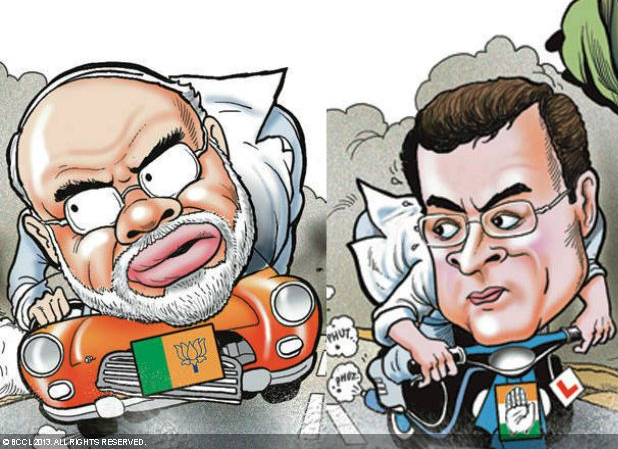Politics in India (Hindi:भारतीय राजनीति) takes place within the framework of a federal Westminster-style Parliamentary democratic constitutional republic, in which the President of India is head of state and the Prime Minister of India is the head of government. Nominally executive power is exercised by the President and is independent of the legislature. Legislative power is vested in both the government and the two chambers of the Parliament of India, the Lok Sabha and the Rajya Sabha. Federal and state elections generally take place within a multi-party system, although this is not enshrined in law. The judiciary is independent of the executive and the legislature, the highest national court being the Supreme Court of India. India is the world's largest democracy in terms of citizenry.
India is as a nation has been labelled as a "sovereign socialist secular democratic republic". Like the United States, India has had a federal form of government since it adopted its constitution. However, the central government in India has greater power in relation to its states, and its central government is patterned after the British parliamentary system. The central government has the power to dismiss state governments under specific constitutional clauses or in case no majority party or coalition is able to form a government. The central government can also impose direct federal rule known as president's rule (or central rule). Locally, the Panchayati Raj system has several administrative functions and authorities.
For most of the years since independence, the federal government has been led by the Indian National Congress (INC).[1] The two largest political parties have been the INC and the Bharatiya Janata Party (BJP). Although the two parties have dominated Indian politics, regional parties also exist. From 1950 to 1990, barring two brief periods, the INC enjoyed a parliamentary majority. The INC was out of power between 1977 and 1980, when the Janata Party won the election due to public discontent with the promulgation of emergency by Prime Minister Indira Gandhi in 1975. In 1989, a Janata Dal-led National Front coalition, in alliance with the Left Front coalition, won the elections but managed to stay in power for only two years.[2]
As the 1991 elections gave no political party a majority, the INC formed a minority government under Prime Minister P.V. Narasimha Rao and was able to complete its five-year term.[3] The years 1996–1998 were a period of turmoil in the federal government with several short-lived alliances holding sway. The BJP formed a government briefly in 1996, followed by the United Front coalition that excluded both the BJP and the INC. In 1998, the BJP formed the National Democratic Alliance(NDA) with several other parties and became the first non-Congress government to complete a full five-year term.[4] In the 2004 elections, the INC won the largest number of Lok Sabha seats and formed a government with a coalition called the United Progressive Alliance (UPA), supported by various parties.[5] In the 2009 Lok Sabha elections, the INC won with a majority of more than 200 seats and formed the government by creating a coalition with other parties which were willing to form alliance with it.
Indian democracy has been suspended once.[6] Nevertheless, Indian politics is often described as chaotic. More than a fifth of parliament members face some criminal charges and around 40 of them are accused with serious criminal charges.[6]
He is The FAther of GOVERNMENT


0 comments:
Post a Comment